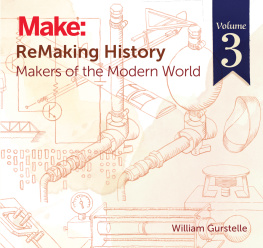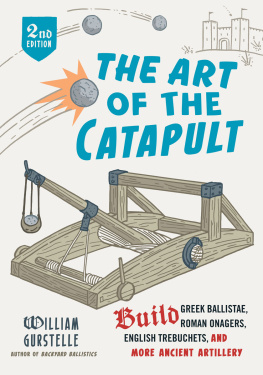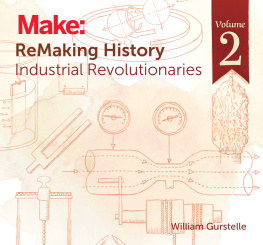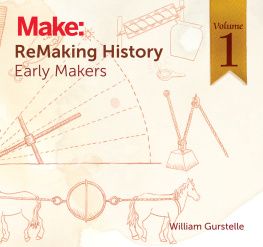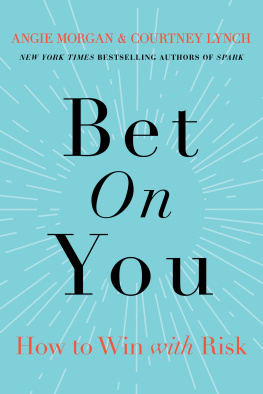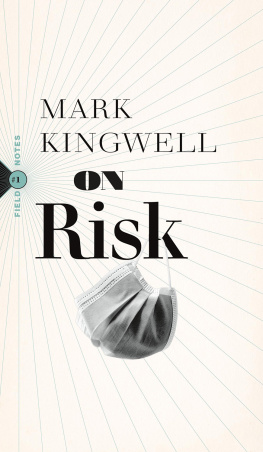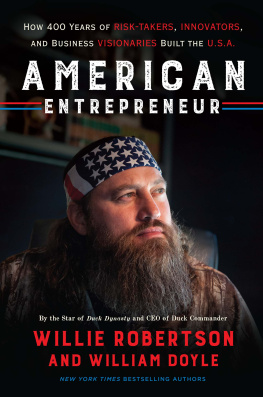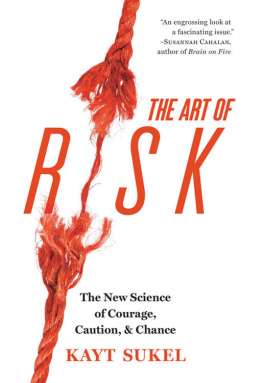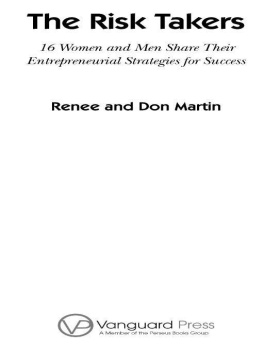ABSINTHE &
FLAMETHROWERS
ABSINTHE &
FLAMETHROWERS
PROJECTS AND
RUMINATIONS
ON THE
ART OF LIVING
DANGEROUSLY
WILLIAM GURSTELLE

Library of Congress Cataloging-in-Publication Data
Gurstelle, William.
Absinthe & flamethrowers : projects and ruminations on the art of
living dangerously / by William Gurstelle. 1st ed.
p. cm.
Includes bibliographical references and index.
ISBN 978-1-55652-822-4
1. Threat (Psychology) 2. Daredevils. 3. Stunt performers. I. Title.
BF575.T45G87 2009
155.232dc22
2008046619
Visit www.AbsintheAndFlamethrowers.com for additional help and updates.
Copyright 2009 by William Gurstelle
All rights reserved
First edition
Published by Chicago Review Press, Incorporated
814 North Franklin Street
Chicago, Illinois 60610
ISBN 978-1-55652-822-4
Printed in the United States of America
5 4 3 2 1
Acknowledgments
The information in this book has been assiduously researched and documented. In addition to a tremendous amount of library and database research, I interviewed some of the worlds leading experts on what are unquestionably some very arcane and esoteric subjects.
I interviewed several academic researchers whose pioneering work has opened new areas of psychological research within the topics of risk and risk taking. What a thrill it was to learn from the person who knows so much about fast cars and fast driving that hes the one Jay Leno turns to for help. I talked extensively with the pyrotechnical engineer who literally wrote the book on making black powder. I spoke at length with a nationally famous chef and television show host who travels the world eating dangerous foods.
The august group of learned academicians, tech wizards, and practical geniusesmy panel of expertspatiently answered questions, provided key pieces of information, and helped me form the ideas and projects contained in this book.
All were willing to take time and share their expertise with me. I thank them with great sincerity.
The Living Dangerously Panel of Experts:
Alan AbelWriter and Media Prankster
Gale BanksAutomotive Expert, Founder of Gale Banks
Engineering
Robert DanteBullwhip Artist
Dave DeWittAuthor and Chile Pepper Consultant
Dr. Frank FarleyProfessor of Educational Psychology, Temple
University
Dr. Alain GorielyProfessor of Mathematics, University of
Arizona
Mr. JalopyContributing Editor, Make magazine
Morten KjlbergFounder, Lightertricks.com
Dr. Dirk LachenmeierFood Scientist, CVUA Karlsruhe,
Germany
Dr. Stephen LyngProfessor of Sociology and Criminal
Justice, Carthage College
Dr. Terry McCrearyProfessor of Chemistry, Murray State
University
Richard NakkaRocket Engineer
Christian RistowMechanical Artist
Jon SarriugarteOwner, Form and Reform
Ian von MaltitzAuthor and Engineer
Andrew ZimmernHost, Travel Channels Bizarre Foods
Dr. Marvin ZuckermanEmeritus Professor of Psychology,
University of Delaware
Besides the panel of experts, there are others to whom I owe a great deal. I am much obliged to the support and inspiration provided by my family: Alice Gurstelle, Carol and Steven Gurstelle, Carol and Glen Fuerstneau, and Wendy and Barry Jaffe. My agent, Jane Dystel at Dystel and Goderich, has long been a source of help and a pillar of consistency in a rapidly changing publishing world. Cynthia Sherry, publisher and editor at Chicago Review Press, made many significant and thoughtful suggestions for which I am very grateful. Conversations regarding this work with my son (and attorney-in-training) Ben and my son (and personal archeologist) Andy were always helpful and uplifting. There are others who helped and inspired me but are not listed here due either to my oversight or their understandable desire to keep their name out of the papers. Finally, I owe a tremendous debt of gratitude to Karen Hansen, who helped me in so many ways as I wrote this book, just as she does in all of the other aspects of my life.
Contents


Prologue
The Age of the Lily-Livered
We are living in the age of the lily-livered, where everything is a pallid parody of itself, from salt-free pretzels to the schooling of children amid foam corner protectors and flame-retardant paper.
I blame the people at the top for setting the tone.
I blame parents.
I blame the arbiters of virtue.
Sometime over the past generation we became less likely to object to something because it is immoral and more likely to object to something because it is unhealthy or unsafe. So smoking is now a worse evil than six of the Ten Commandments, and the word sinful is most commonly associated with chocolate.
Gone, at least among the responsible professional class, is the exuberance of the feast. Gone is the grand and pointless gesture.
ABRIDGED FROM AN ESSAY BY
DAVID BROOKS, NEW YORK TIMES,
March 12, 2005
I admit to being somewhat of a late bloomer in terms of striving to be a person who lives dangerously and artfully. For two decades I worked in the communications business, a notoriously procedure-bound industry, doing presumably important but not particularly engaging work. This industry is huge, multifaceted, and full of opportunities. For more than 100 years, engineers like me provided highly dependable telephone service to anyone who could afford the incredibly modest rental price of a phone line.
While some perhaps looked forward to each workday with breathless anticipation, to me it was monotonous and ultimately stultifying. Going to work every day became a drag, and I found myself basically waiting for the weekend.
Sure, salaries were decent, and without question there are opportunities for those who base their careers here to learn and grow. But I never talked about what I did at cocktail parties. It did not make for interesting conversation. What I did was honorable and, I suppose, important, but it was devoid of art and bereft of danger.
Eventually I figured out that the path I had chosen wasnt the right one for me. I realized there was a hole in my life, an emptiness caused by missing the experiences and risk/reward calculus that my brain chemistry required for happiness.
In 1999 I began investigating and writing about unusual, highly kinetic science and technology. I had always been interested in homemade things that went whoosh and boom, but I hadnt really considered them serious enough or important enough to turn into a career.
The turning point occurred when I wrote a book of science experiments called Backyard Ballistics. The unique thing about the dozen science projects in the book is their edginess, their quirkiness, and most of all, their obvious potential for danger. In the book are descriptions of the homebuilt, high-velocity, high-energy experiments and projects Id been collecting since I was a freshman in college. There are instructions for building things that shoot potatoes at 80 miles per hour, that send kites of burning newspapers high overhead, and that fling projectiles at high speed from the slings of homebuilt catapults.
Next page

